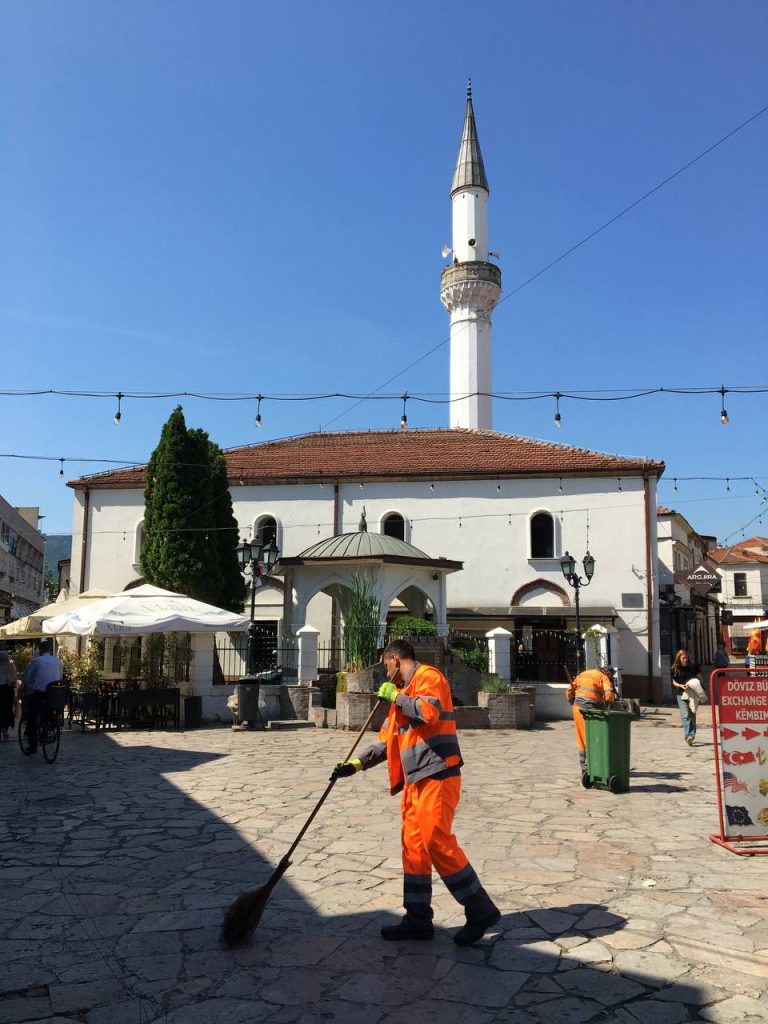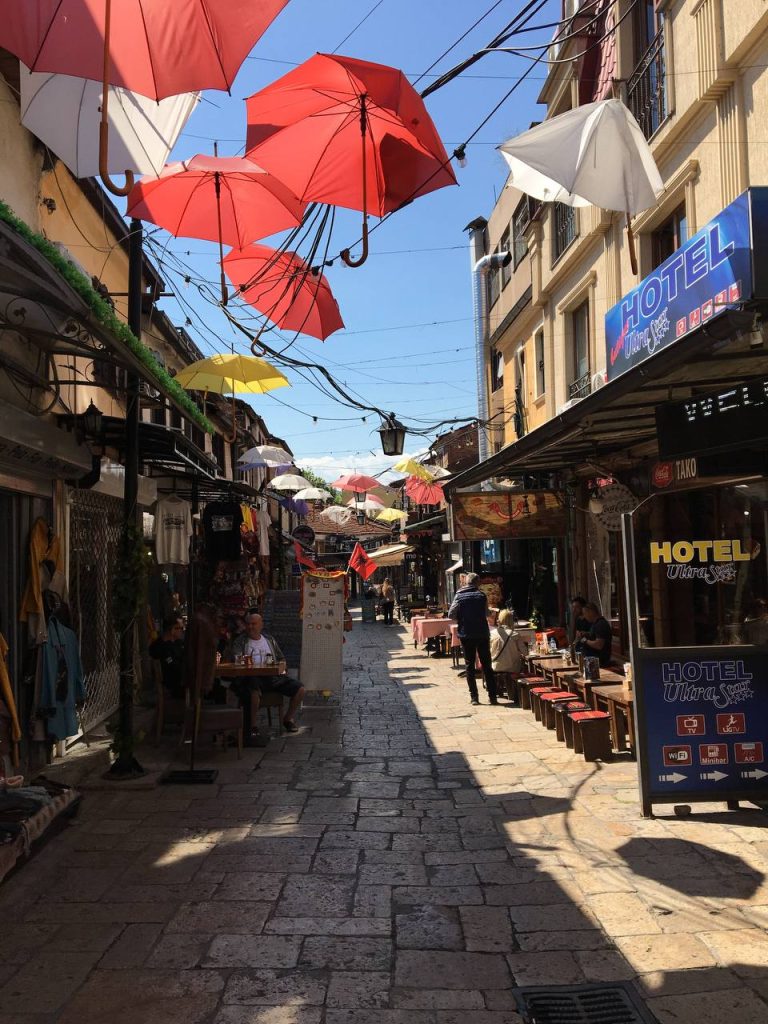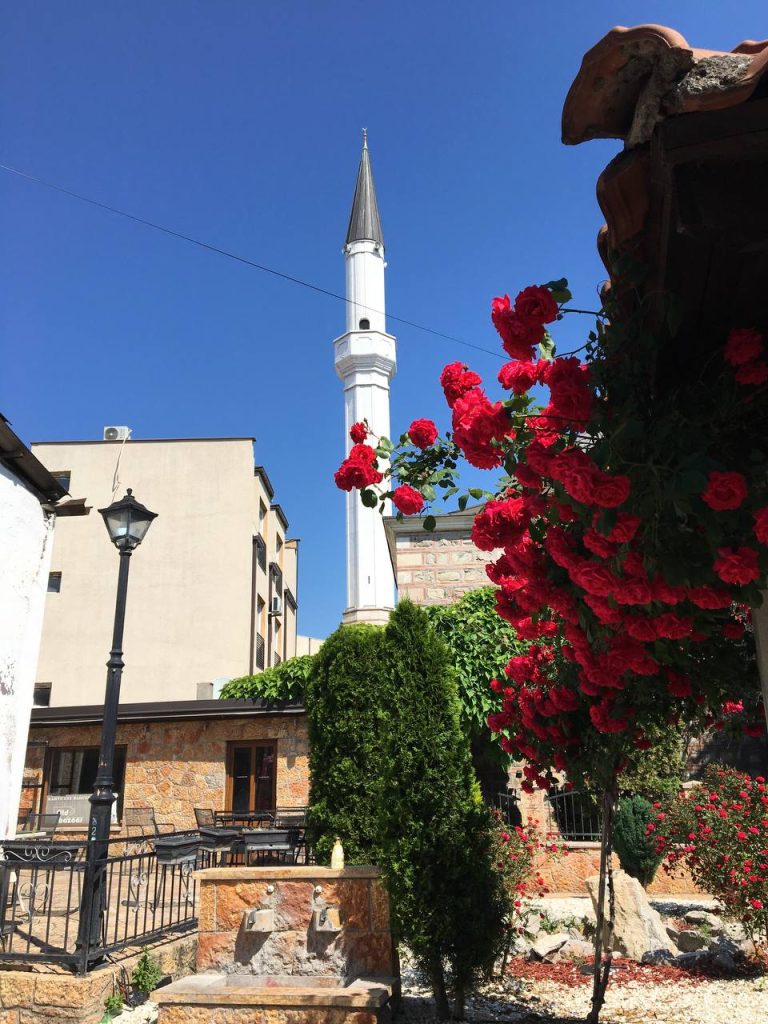Traveling is a key to another world. Fifteen participants from weltgewandt e.V. / Germany, Pluriversum / Italy, Insite Drama / Hungary and the Roma Youth Center / Macedonia experienced this in a variety of ways, when they participated in a European workshop in Skopje from 8th to 11th May 2025. They enjoyed many surprises as they compared their perceptions beforehand and later on site.
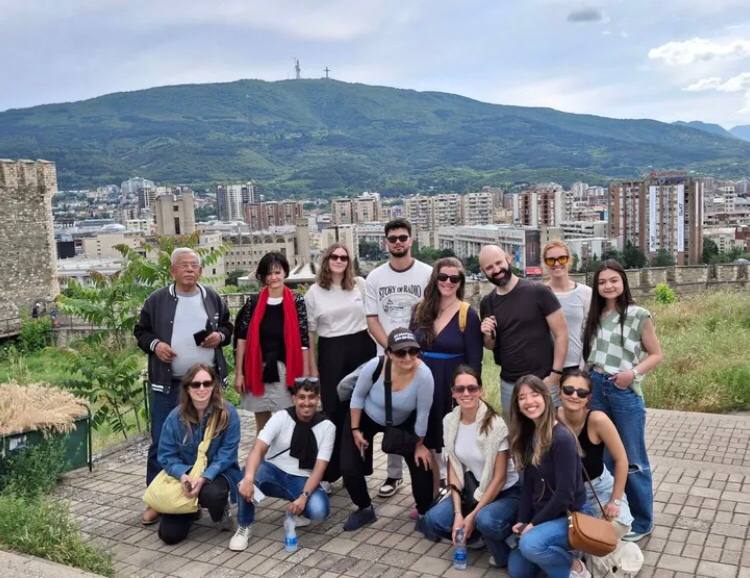
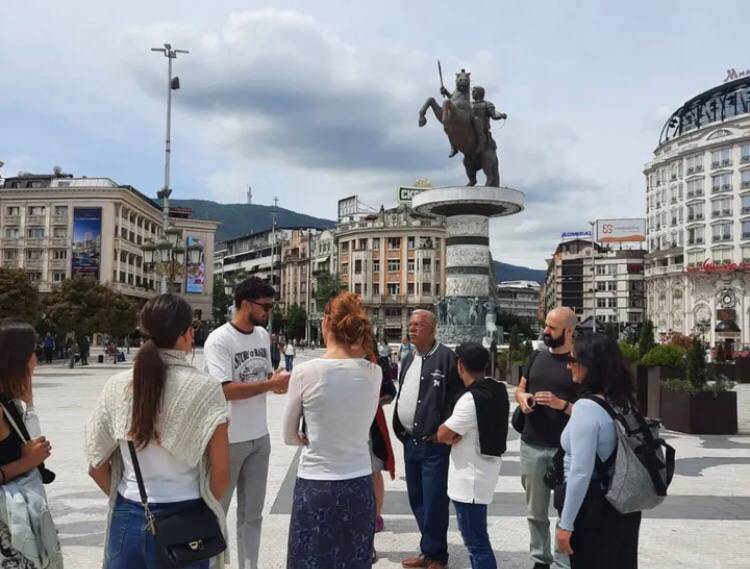
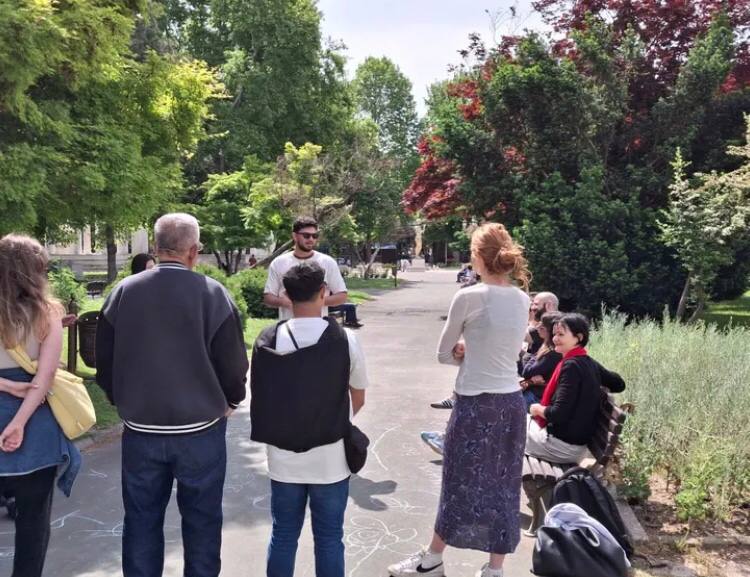
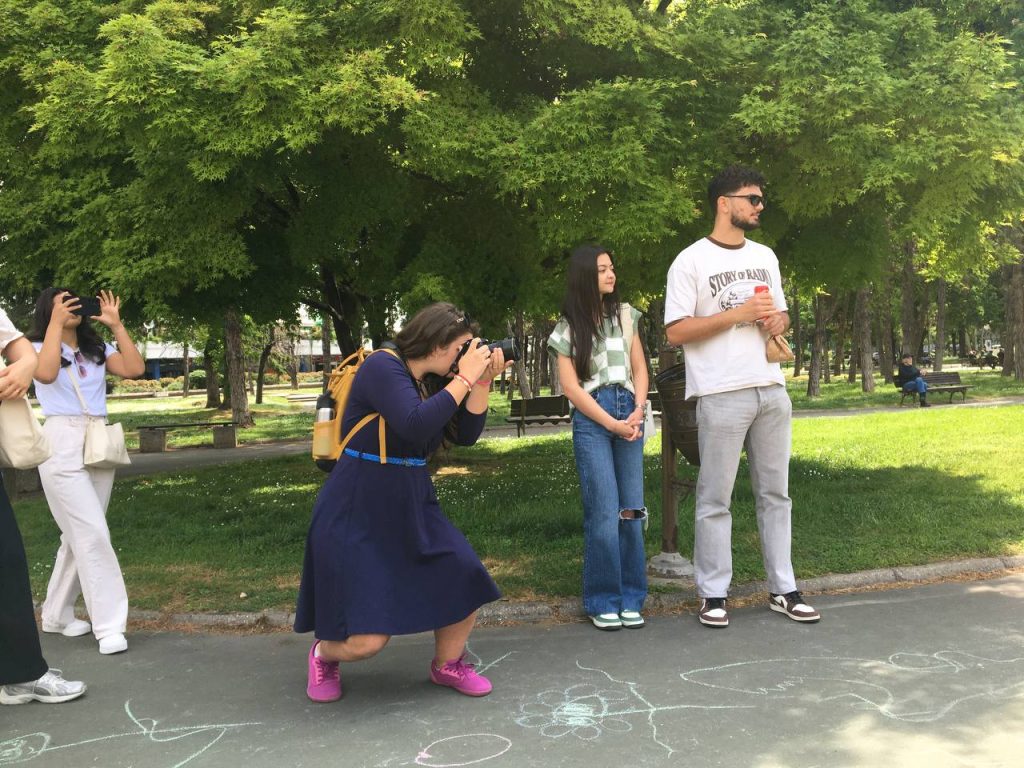
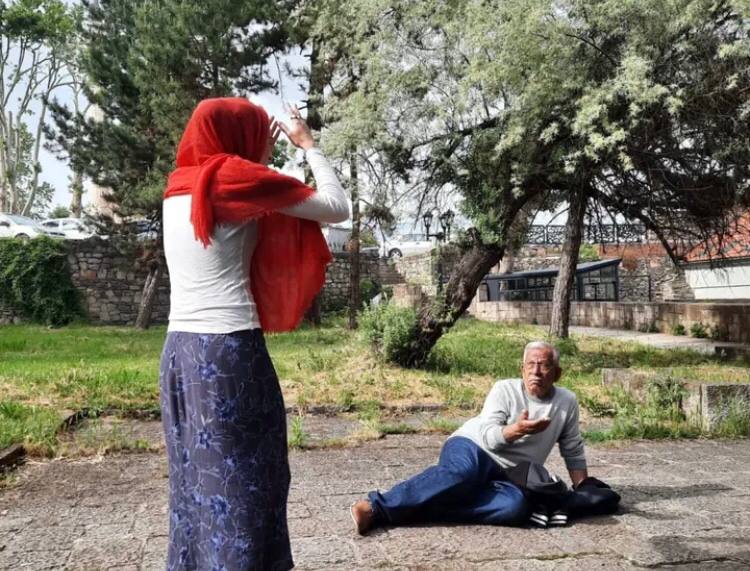
Controversies about history(ies)
It began with a walk through various parts of the city, which became an introduction to historical-political controversies and the real-life multiculturalism of the Macedonian, Albanian, Turkish, Serbian, and Roma population groups. Is it North Macedonia or Macedonia? The answer was clear: “You insult us when you address us as ‘North Macedonians.'” So there is an official name and one that the citizens use. And to whom does the conqueror Alexander the Great (356-323 BCE) ‘belong’, the Greeks or the Macedonians? Does the distinction between Slavic and Greek Macedonians help to avoid power and identity disputes? And why is the Albanian-Turkish part of Skopje called the “Old Town,” while the Macedonian part is called the “Center“? How do people in Skopje experience being part of a community—in (urban) society? The guests immersed themselves in the peculiarities of a cultural mix that seemed as peaceful as it was unspectacular. This does not exclude occasional conflicts, such as the dispute over the monumental Christian cross on the mountain outside Skopje in 2016, and debates about a turbulent history.
The project participants listened to the explanations of the partners from the Roma Youth Center, were amused by the many statues in the city – not only a few of which were erected only after the 1963 earthquake – and wondered why Alexander the Great and Mother Teresa had particularly caught their attention during their preliminary research on Skopje.
In preparation for the meeting, they had compiled their perceived characteristics of Skopje and expressed them creatively: in theater scenes, videocasts, and video collages. They presented these results to the entire group, thus initiating a discussion about perceptions of reality. This contrast allowed for greater awareness of the real Skopje.
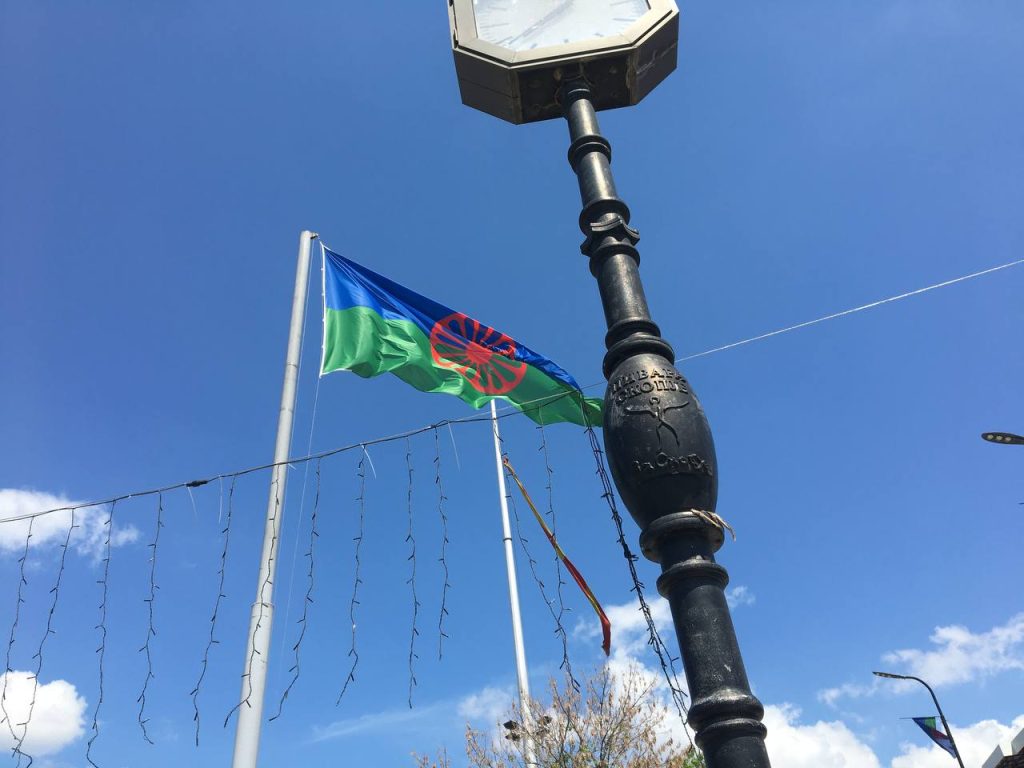
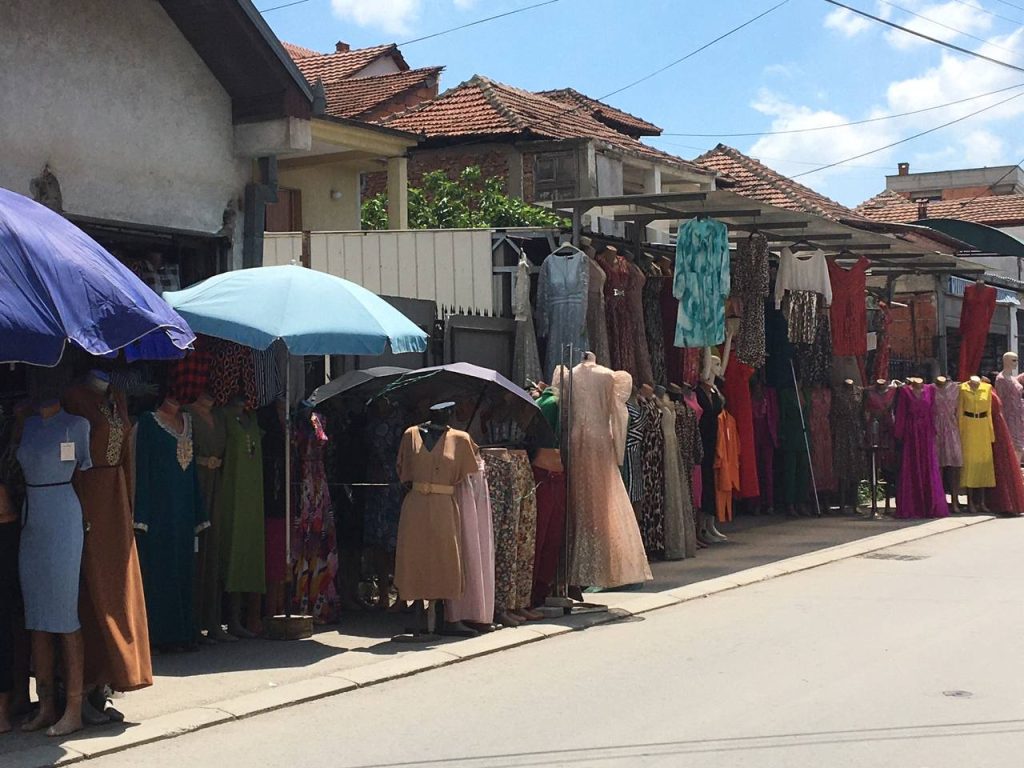
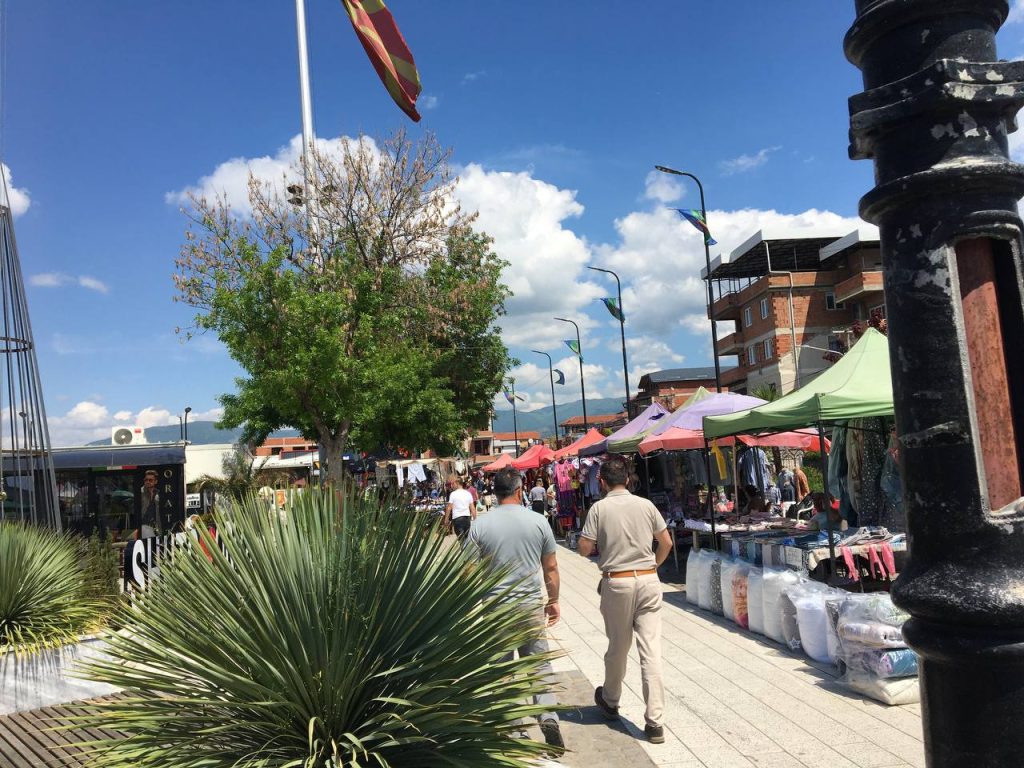
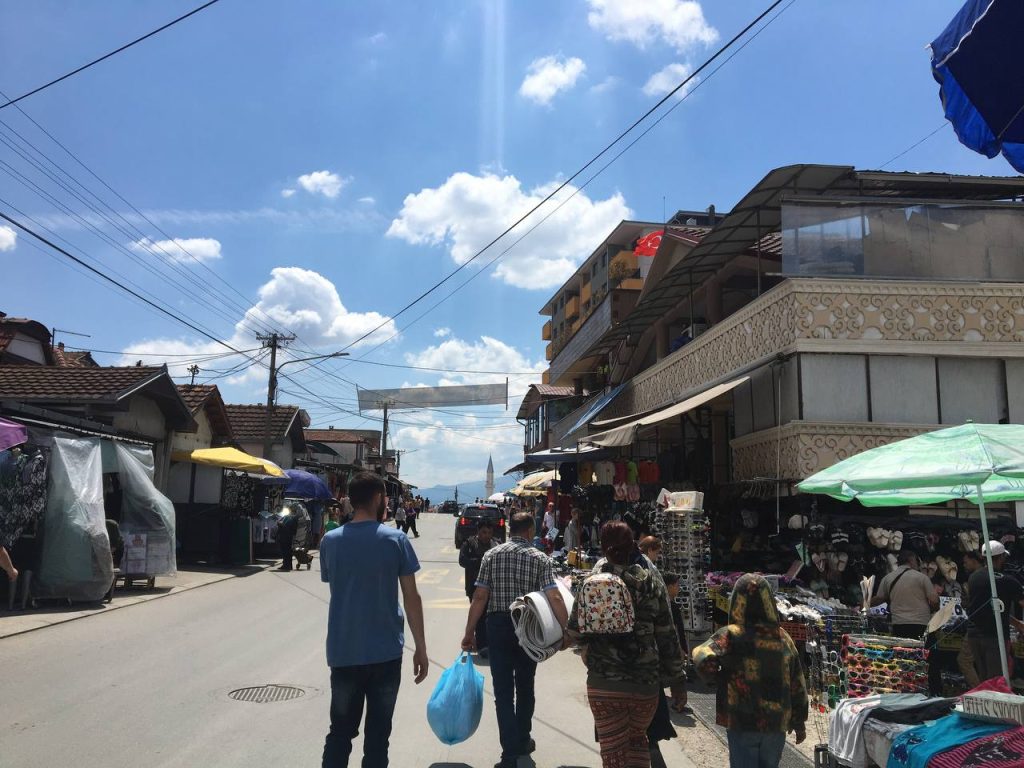
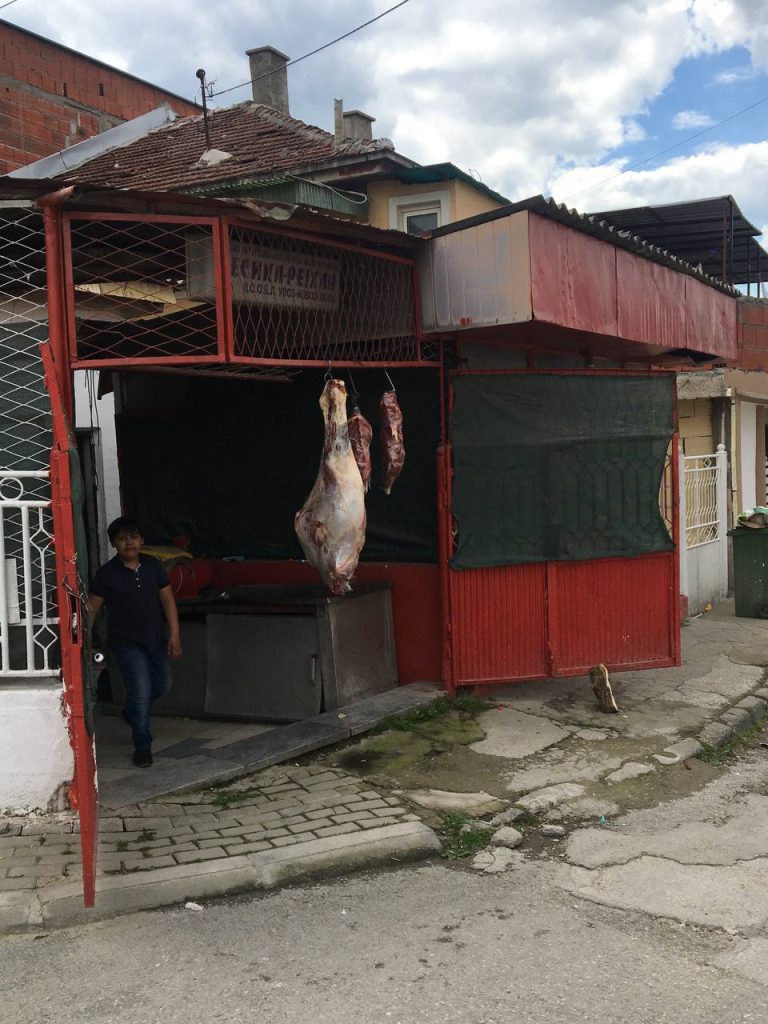

Inclusion of cultures
A real eye-opener and key to the world of Roma communities was a visit to the Šuto Orizari district. It was built for Roma after the 1963 earthquake. The project partners, all Roma themselves between 22 and 35 years old, reported that the district’s mayor is himself a Roma, that the Roma are mentioned alongside other ethnic groups in the Constitution of North Macedonia (unique in Europe), that most of them are Muslim, that many Roma in Skopje speak German and also work for German companies (often in call centers). They usually marry very young because women’s ‘virginity’ is still highly valued.
The group strolled through a large bazaar where small traders hawked their various wares. The path was lined with Roma flags, and the people seemed as confident as they were humane. It seemed that in Skopje, the (structural) discrimination against Roma, as observed in other Eastern European countries, is less pronounced. Roma are part of a cultural and political fabric in which various groups have their place.
The project participants shared their impressions: The Italian women realized that they had apparently adopted some prejudices against Roma. These can be deeply rooted, even if one doesn’t want them to be. One of the Hungarian women, on the other hand, does sociodrama work with Roma in the east of the country and found the situation in Macedonia to be significantly more relaxed. Legally guaranteed equality, opportunities for gainful employment, and apparently less discrimination than in other countries provide inspiration for coexistence between people of different cultures and backgrounds—although much remains to be done.
Exhibition and performance
It was fascinating to see at this European meeting how methods of non-formal and informal learning can provide lasting inspiration, because they extend beyond the workshop. This was also the focus of the work on the two project outcomes, the photo exhibition and the collaborative performance. For both, the participants developed four key concepts related to the topic of CITY, which they will focus their attention on:
1/ Equality between different (cultural) communities, development of neighborhoods or districts,
2/ Challenges between tradition and modernity including the ambivalences of tourism,
3/ Prejudices and how to overcome them,
4/ Social inclusion in the ambivalence of freedom from social control and overcoming loneliness.
Those involved are themselves excited about the results, which they will present publicly in Berlin at the end of September 2025.
